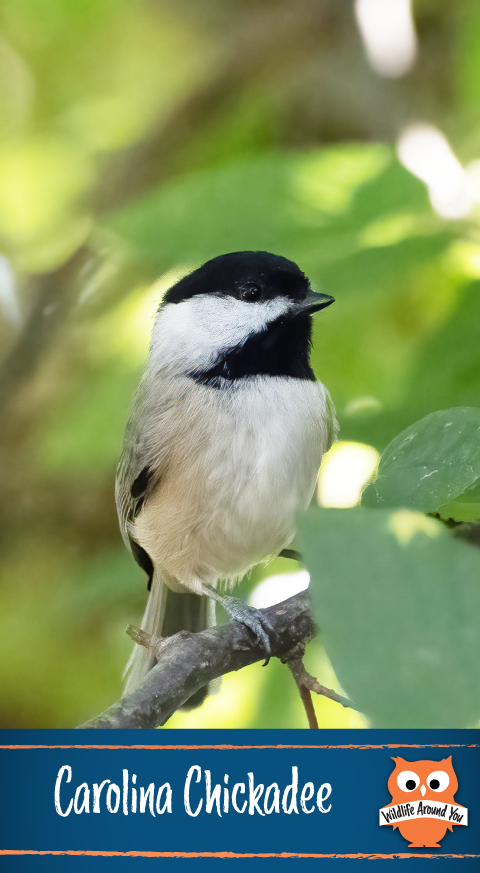Identification
A tiny bird with a short neck and large head. About 4 inches in length and about 0.5oz in weight. The tail is fairly long and narrow.
They have a black cap and bib separated by stark white cheeks. The back, wings, and tail are gray.
Sometimes confused with the Black-Capped Chickadee. The easiest way to differentiate them is based on their areas. Carolina Chickadee is in the South East Corner, and Black-capped Chickadees are in the Northern US and Canada.
If you draw and line from NJ to Kansas that is kind of the dividing line, and where you would have to differentiate them, which may be impossible because they can mate and hatch hybrids.
Habitat
Like forested areas, or urban/suburban areas with large trees. They don’t migrate.
Nesting
They tend to nest in cavities by excavating or finding an unused cavity usually 2-25 feet up in a tree. They compete with Downy Woodpeckers, Brown Creepers, and Tufted Titmice for these cavities.
Both members in the pair excavate or pick the nesting site. The female builds the nest. The base is made of moss and sometimes bark strips. Then she puts hair or plant fibers on top to make a thick lining.
While nesting the female will sleep in the cavity, and the male will nest sheltered in a nearby tree, vine or shrub.
Behavior
Curious birds and very acrobatic. They’ll hang out with other Carolina Chickadees and other small birds, except during mating season. While eating they will still space out pretty far from others.
Each flock member has a rank, and once spring is here, the top-ranking birds get to nest in the territory. The lower ranks have to travel further to try to establish a territory. Due to this many may not nest that season.
They communicate constantly. Carolina Chickadee songs sound like Chick-a-dee-dee
Offspring
Clutch is 3-8 eggs, about 0.5 inches
Incubates for 12-15 days, then nestlings for 16-19 days
Predators
Hawks, Owls, and Shrikes can capture adults. The nestlings and eggs are in danger from any tree-climbing mammal
Diet
Primarily insects and spiders, but during the winter it’s about half plant, half animal.
Pick the insects from the tree foliage and bark, can even hang upside down to do it.
Will place the food between their feet and the branch they are perched on to peck at it.
Often can be seen at bird feeders, taking a seed and then flying off to a close branch to eat, but 75% plus of their diet still comes from insects and spiders
In climates that get below 10 degrees, feeders can be a lifesaver, doubling their chance of survival. They can need 20% more food than they would in the summer, which is about 10% of their body weight.
Fun Facts
Where the two species ranges come in contact, the Carolina and Black-capped chickadees occasionally hybridize. Hybrids can sing the songs of either species or might sing something intermediate.
The oldest known Carolina Chickadee was at least 10 years and 11 months old when it was recaptured and rereleased during banding operations in West Virginia in 1974
It is speculated that John James Audubon was the one who named these songbirds

